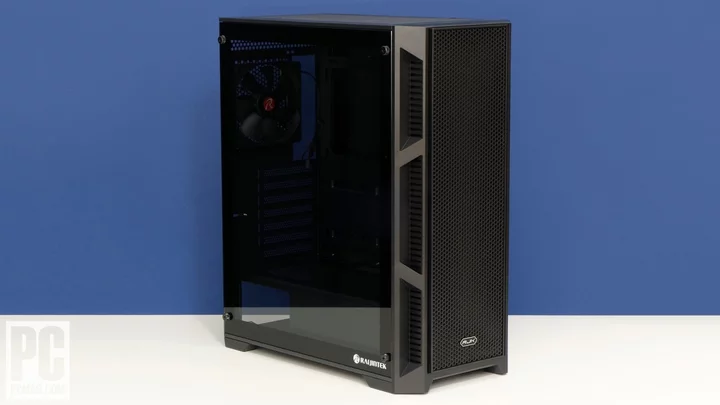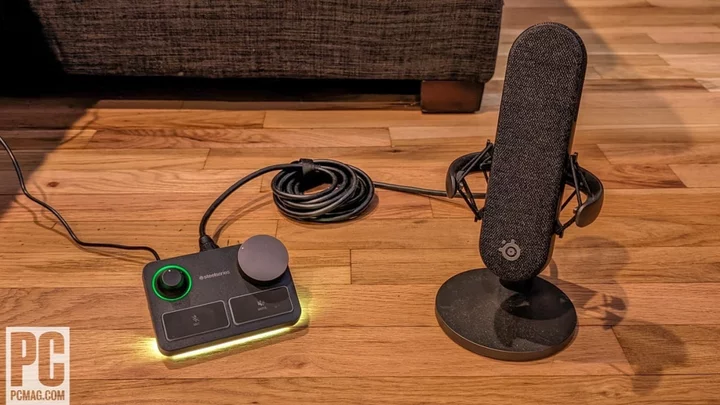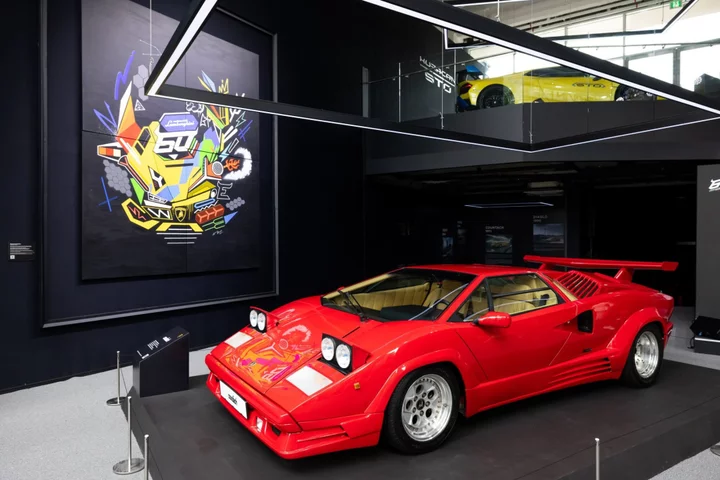Companies tend to put their marketing dollars behind their more profitable products, which may be why we receive more higher-margin PC cases instead of economy models to review. Another reason that vendors may be reluctant to send us cheap gear is fear that budget parts will fail to meet even our most basic expectations. Not so Raijintek's $45 Arcadia III. This rock-bottom-budget chassis gave us several surprises—and more of them were welcome than not. The Arcadia doesn't edge our current budget-tower favorite, the Montech Air 903 Max, but it's a tempting buy if you want a huge case for a very small price.
The Design: Too Nice for Its Price?
The idea of a tower case priced under $50 may conjure images of warped panels, jagged edges, or ill-fitting seams, but that's not what you get with the Raijintek. The Arcadia III is a slick mid-tower with a tempered glass side panel and a high-quality finish that at a glance resembles recently reviewed cases costing twice as much.
That said, we didn't have to look very hard to spot the Arcadia III's first cost-cutting move: The lack of any USB Type-C port will jump out to nearly any neophyte, and users with a little experience will notice that one of the front-panel USB ports is blue but the other two are black. Yes, this case settles for vintage USB 2.0 for two of its three front ports.
(Credit: Thomas Soderstrom)By contrast, nothing jumps out immediately about the rear panel, at least since we've seen the same low-end, outward-facing expansion-card bracket on mid-priced cases. There's a 120mm exhaust fan screwed to slotted mounts that make it easier to find the correct height to mount a rear-panel 120mm radiator, along with a larger space above the motherboard area that makes room for top-panel radiators.
(Credit: Thomas Soderstrom)Your second clue to the Arcadia's economizing is its exclusive use of break-out slot covers, which can't be screwed back in place. The case doesn't include any screw-in covers, and removing the break-outs can be extremely difficult once a motherboard is installed. On a positive note, the sliding cover next to the slots opens a bit past three-quarters of an inch, which is wide enough to pull the tongues of most cards past the decorative plastic covers of most gaming-style motherboards.
(Credit: Thomas Soderstrom)We mentioned top-panel radiator space. To be specific, it's 58mm above the motherboard. That's enough to fit a 28mm radiator and 25mm fan with 5mm of clearance, but that leaves little room for cables and no room for fingers, which means you'll want to plug in all connectors along the top edge of the motherboard before installing the radiator. Radiator space is slightly more than 360mm, which means 280mm is the largest format to fit, since radiators in the 360mm format tend to measure at least 394mm long.
(Credit: Thomas Soderstrom)Another feature that belongs only on the cheapest cases but occasionally makes its way into the mainstream is the tab-secured power supply dust filter. It's far easier to clean with compressed air than it is to remove for rinsing.
(Credit: Thomas Soderstrom)Speaking of inconvenient dust filters, the front one is mounted between a metal grid and a plastic frame using folded tabs. We suggest using compressed air to clean that filter as well.
(Credit: Thomas Soderstrom)Raijintek brags about the ability of its bargain case to support giant 360mm-format radiators but modestly doesn't mention its ability to support even larger 420mm-format (three-by-140mm) radiators, even though the gap (69mm thick) behind its front mount stands 464mm tall. We tried a Corsair H170 to verify and it fit nicely after only minor manipulation difficulty.
Space between the fan mount and front filter allows up to three 140mm-by-25mm (or 120mm-by-25mm) fans, and the 69mm behind the mount allows a second set of fans to be added to the back side of radiators. To be sure, you'll probably need to remove the lower drive cage and the power supply to get a screwdriver back there (and we also wonder why you'd install a pricey radiator setup in a case that costs a small fraction of all that hardware, but that's your call).
(Credit: Thomas Soderstrom)Cases used to have drive cages where front-panel radiator mounts are found today, and removing those drive cages has cleared space for motherboards up to the full depth of the motherboard tray. Yet Raijintek is one of the few brands not to take advantage of that space by adding a fourth column of standoffs near the tray's front edge. In other words, the Arcadia III lacks mechanical support for 13-inch-deep boards, even though it has room for one. Though this case may not have attracted many hardcore EATX builders, we think adding three extra mounting holes and a dime's worth of standoffs would have made a nice "because we could" statement to budget case buyers.
(Credit: Thomas Soderstrom)In addition to its CPU cooler access hole and cable passages, the motherboard tray features two rear-facing 2.5-inch drive mounts with oversize holes. A power supply tunnel beneath it adds a 3.5-inch drive cage with screw holes (both 3.5-inch and 2.5-inch spacing) for mounting a second drive to its lid.
(Credit: Thomas Soderstrom)The drive cage can be moved forward 1.25 inches to make room for longer power supplies, but doing that reduces front-panel radiator space to approximately 38mm. You can also remove the cage entirely.
Building With the Arcadia III
The Arcadia III is supposed to come with eight M3x5mm screws with oversized flanges, but ours didn't. It also includes only 15 M3 screws with traditional flanges, nine of which are required by the motherboard. That leaves only six screws to secure as many as three 2.5-inch drives, with heads the same size as the holes of two of those drive mounts. We're sure this was a packing mistake, but since it's how we received the case from Newegg, buyers who plan to use the 2.5-inch mounts on the back of the motherboard tray should be prepared to wait for replacement screws or rummage their junk drawers. Our sample did come with two extra standoffs, regarding our comment about its missed EATX opportunity.
(Credit: Thomas Soderstrom)Internal header cables include the front-panel button and indicator LED group, an HD Audio block for the front-panel headset combo jack, and both USB 2.0 and 3.0 (that is, USB 3.2 Gen 1) wiring. Half of the Gen 1 interface is wasted as it feeds only a single port.
(Credit: Thomas Soderstrom)We measured the case depth at 16.5 inches including the half-inch of tab sticking out of the back, but the Arcadia III had more than enough room for our full ATX motherboard and graphics card. Mounted to its included PS2 adapter plate, FSP's tiny yet powerful Dagger SFX Pro 850W power supply shows through the reveal at the bottom.
Our finished system doesn't include all the lighted fans of Raijintek's demo build but it looks cleaner, with only the internal components aglow.
(Credit: Thomas Soderstrom)As for our test comparisons: We're using Montech's abovementioned Air 903 Max since it's the cheapest ATX case we've tested recently, and including its 50% fan-setting data since it uses much faster and noisier fans than other cases we've sampled lately. We used Prime95's small FFTs setting to heat up our processor, Furmark's default stress test to heat up our graphics card, and HWiNFO64 to record temperatures. Here's a summary of the standard parts we used...
Testing the Arcadia III: A Little Toasty in Here
With no intake fans included, the Arcadia III allowed our CPU temperature to climb past even the warm-running MSI MAG Forge 112R. It's a full 5 degrees C hotter than the Gigabyte C301 Glass or Cougar Duoface (the latter with its cheaper steel face installed).
Voltage regulator temperatures are middling, thanks to the Arcadia's positioning of its top-panel radiator bracket almost directly over our motherboard's voltage regulator heatsinks. Our closed-loop cooler's fans did the rest.
The GPU temperature chart appears to indicate a gradual building of latent heat inside the Raijintek, which makes some sense in a case with no intake fans, but what component could be holding that much heat? Perhaps the tempered glass side panel?
Due to the relationship between increased in fan speed and noise, we'd hoped that the Arcadia III's higher-than-average temperatures would correspond to a lower decibel reading. That didn't happen. Instead, the design allowed our graphics-card noise to exit the case with little encumbrance. That made it the second-loudest behind the best-in-class cooling of the Air 903 Max (at its max fans setting).
Verdict: I Can Build It for You (Almost) Wholesale
Setting aside the screws missing from our review unit, take a minute to consider how the $45 Raijintek Arcadia III compares to cases like the $89.99 MSI MAG Forge 112R. There's little difference in quality or even weight, but the Forge includes what's essentially an additional $30 ARGB fan and controller kit, removable 2.5-inch drive trays that don't require motherboard removal to access drive screws, two front-panel USB 3.2 Gen 1 ports instead of one, and the extra row of EATX mounting holes (but not the corresponding standoffs). One or two of those might matter to you, but is any of them worth twice the price? Similarly, the Montech Air 903 Max packs in a brace of nifty RGB fans and a controller, which mainly matters if RGB is your thing. We prefer the Montech as a complete package, but it's hard to argue with the Arcadia III's price if your priority is getting a big case on a tiny budget.









